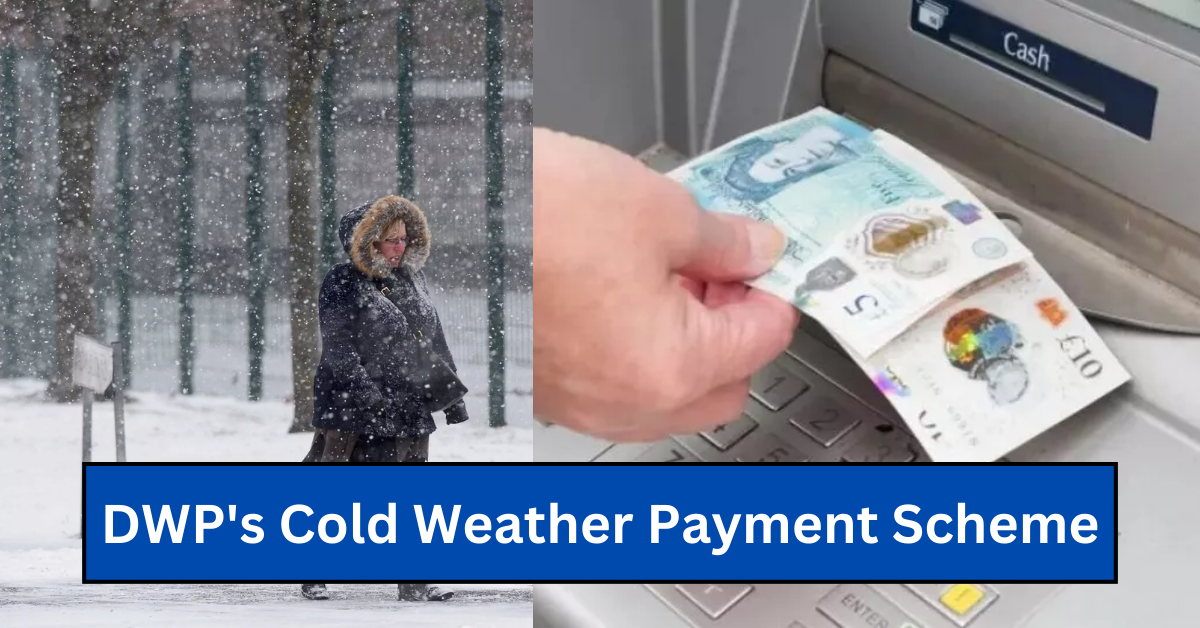The Cold Weather Payment, a financial relief program by the UK government, offers extra support to low-income households during extreme winter conditions. If you’re receiving benefits like Universal Credit or Pension Credit, this scheme might provide some much-needed help to cope with increased heating costs.
What Are Cold Weather Payments?
Cold Weather Payments are part of the Department for Work and Pensions (DWP) program. They provide £25 for every seven consecutive days of temperatures at or below 0°C in your area. These payments are automatically issued to eligible households to help manage rising energy bills caused by severe weather conditions.
The program runs annually between November and March, ensuring that vulnerable households can keep their homes warm during the harshest months.
Who Is Eligible?
To qualify, you must live in England or Wales and receive one of the following benefits:
- Universal Credit
- Pension Credit
- Income Support
- Income-Based Jobseeker’s Allowance
- Income-Related Employment and Support Allowance
- Support for Mortgage Interest
If you meet these criteria and your area experiences a cold spell, you’ll receive the payment automatically. There’s no need to apply.
How Do Cold Weather Payments Work?
The payments are triggered when the Met Office records or forecasts temperatures of 0°C or below for seven consecutive days in your area. Once triggered:
- Eligible households receive £25 for the qualifying period.
- Payments are deposited directly into the same bank account used for benefit payments.
- Funds typically arrive within 14 working days after the cold period.
If you believe you’re eligible but haven’t received a payment, you should contact the DWP for clarification.
Regions Affected by Recent Cold Weather Payments
During the recent cold spell, several regions in England and Wales became eligible for payments. These areas include:
- West Yorkshire (Bradford, Halifax, Huddersfield)
- East Lancashire (Burnley and nearby towns)
- North Yorkshire and County Durham (including Richmond and Spennithorne)
In total, over 100,000 households qualified for support this winter. Some households have already received payments from earlier in the season, with initial distributions starting in November.
How Many People Benefit from the Scheme?
The program helps millions of households annually. Approximately 3.9 million individuals qualify for Cold Weather Payments through various DWP benefits. This winter alone, tens of thousands of households across the UK have already received their payments, offering crucial relief as energy prices remain high.
Recent Weather Updates and Warnings
The Met Office has forecast that the recent cold spell will persist in certain regions before milder conditions arrive later in the week.
New yellow weather warnings for ice have been issued for:
- Most of Wales and Northern Ireland
- Large parts of eastern England
- South and west Wales, extending to Plymouth
These warnings highlight potential hazards due to icy roads and sidewalks, urging residents to exercise caution during their daily activities.
What to Do If You Haven’t Received a Payment
If you think you qualify but haven’t received your Cold Weather Payment:
- Check your eligibility for the scheme.
- Ensure your local area experienced the qualifying cold weather conditions.
- Contact the DWP to confirm your status and resolve any issues.
Conclusion
The Cold Weather Payment scheme is a lifeline for vulnerable households during winter. With temperatures dropping below freezing in many areas, the program provides financial relief to help cover heating costs. If you think you might be eligible, keep an eye on your bank account and contact the DWP if you have concerns about missing payments.
This article has been carefully fact-checked by our editorial team to ensure accuracy and eliminate any misleading information. We are committed to maintaining the highest standards of integrity in our content.
Filza specializes in simplifying financial topics for everyday readers. Whether breaking down Canada’s tax guides or U.S. benefits like SNAP and VA Disability, Filza’s relatable writing style ensures readers feel confident and informed. Follow her insights on LinkedIn or reach out via email at shewrites.health@gmail.com.
